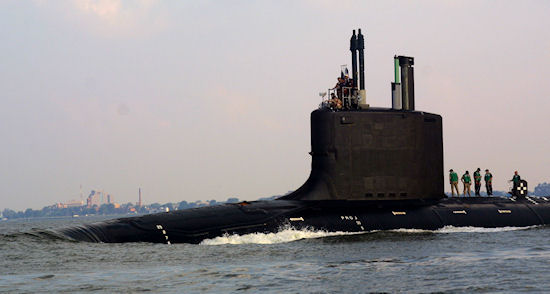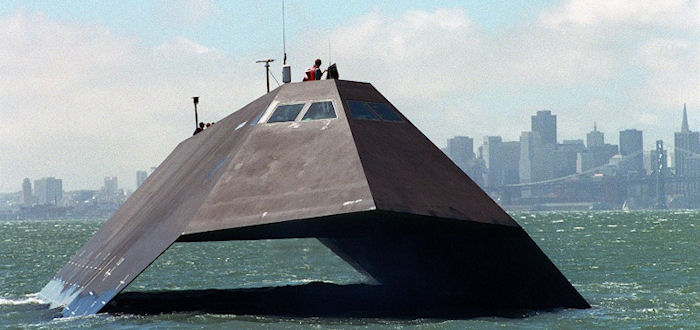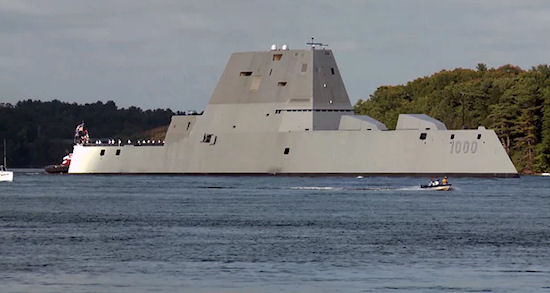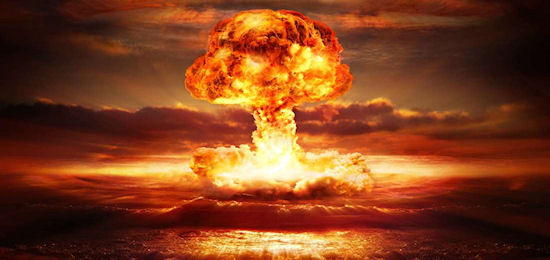The submarine's commanding officer gave the command to come up to periscope depth. Conditions on the surface did not allow the operators to track the almost non-existent sound signature of the ship he was about to meet.
Things were quite different from the previous century. Now he no longer needed to hug the metal pipe and lean over it to see the outside world . At the touch of a button, the photonic antenna emerged from the sea and sent its visual signal to the computer terminal in front of the captain.
In the south-west, the horizon had a nightmarish orange glow, due to the ionized particles in the atmosphere. Two giant mushrooms rose up in the sky like giant revelation knights, while the sea was trying to calm down after the nuclear storm that had once again tyrannized her. Just a few hours earlier his boat seemed doomed. Nuclear torpedoes exploded at just 8 nautical miles and the only thing that saved his ship was its ability to dive below 5,000m. The water pressure at that depth absorbed much of the energy of the nuclear explosions, and the ceramic hull of the submarine withstood.
Completing the rotation of the photon antenna with the keys of his computer, he saw, in the east, what he was looking for. Similar to a giant arthropod, like a mutate sea creature, the ship approached slowly, with its hydro-turbine working at a fraction of its total power. The smooth slopes of her surfaces and the coating of materials that absorb part of the electromagnetic radiation, similar to the first stealth aircraft of the last century, made it almost invisible to the radar.
A few months earlier, the world was plunged in a war with limited use of nuclear weapons on land, sea and space. Tactical nuclear missiles of 0.5Kt and 1Kt nuclear torpedoes were used by opponents in limited numbers, but with nightmarish results. Just outside the Earth's atmosphere, the anti-missile laser stations of the opponents had destroyed most of the space-based nuclear weapons, until successful virus attacks in their operating systems forced them to overload and self-destruct.
This short, yet daunting description that could be part of the screenplay of a B movie becomes even more annoying since none of the things described is unrealistic or unlikely. In fact, all of the technologies, but also the operational tactics mentioned, are at an average or even operational stage of development. It should also be noted that this description is by no means a prediction or illustration of a future battlefield, it is simply used to highlight a number of parameters to be considered later.
Since ancient times, technology has been put at the service of military operations. From the application of simple laws of physics and mathematics to the construction of catapults, the chemical properties of liquid pyre materials, the evolution of firearms and the uses of nuclear energy, technology first comes to serve military needs and only afterwards is employed to other peaceful applications. It is really tragic to think that humanity, from the beginning of recorded history, and especially during the last two centuries, spends incredible resources, both human and financial, to find more effective ways of self-destruction.
The assumptions that one can make about the elements of a future battlefield can only be safe over a few decades. Anything beyond that time enters the sphere of science fiction, as it is not based on data but on speculation.
In the short story that was cited at the beginning, nothing is fantastic. The US Navy's Virginia class nuclear submarine commissioned in 2004 is believed to have two such photonic sensors with simple visual and thermal imaging capabilities. Ceramic and synthetic materials made of graphite and metal compounds have already been studied and qualified for use in deep diving submarines, although it is unknown if they are to be used in one of the next classes.
 |
The use of hydro turbines for the propulsion of surface and submarine vessels has been extensively studied since the 1970s. The surface vessel described could be a development of Sea Shadow, a US Navy experimental craft, which appeared in 1984, with stealth technology characteristics.
 |
The result of testing and experimenting with Sea Shadow was the new Zumwalt class destroyers, the first of which was commissioned in 2013.
 |
The limited use of tactical nuclear weapons has always been one of the options of both superpowers in the event of a full-scale conflict between them. Finally, the use of lasers in space is a crucial part of every anti-ballistic shield under design discussed and designed until today, while space platforms for nuclear weapons have been debated in the early 1960s.





